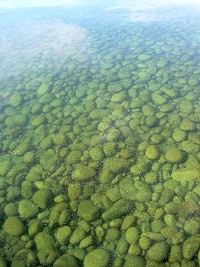| Origin & Development | |
|
Legends & Fairy tales • Earth's Crust Thickness • Underwater Relief • Landscapes • History & Formation • Seismic Activity • | |
| History of Lake Baikal | |
|
History of Explorations • Inhabitants & Settlers • First maps of Baikal • Archaeological Sites • | |
| Lake Baikal Climate | |
|
Introduction • Fogs • Winds & Waves • Ice Conditions • | |
| Fauna & Vegetation | |
|
Mammals • Baikal seal - Nerpa • Ichthyofauna • Invertebrates • Vegetation • | |
| Water of Lake Baikal | |
|
Colour • Transparency • Temperature • Pressure • Depth • Currents • Budget • Chemical Composition • Pollution • | |
| Recreational Areas | |
|
Circumbaikal Railway • Peschanaya Bays • Olkhon Island • Chivirkuysky Gulf • Wooden Irkutsk • Trans-Siberian Railway • | |
| People of Lake Baikal | |
|
People of Siberia • Buryat nation in Baikal • Russians in Baikal • | |
|
| |
| The face of Baikal - Water © A description of Baikal's water & questions concerning its pollution by S.A.Gurulev Colour of Lake Baikal Water
The colour of the lake's water changes with time. Baikal is sometimes blue-green and aquamarine in early spring immediately after the ice has cleared. In summer, especially in August it becomes bright green because of the mass growth of diatoms and blue-green algae. At this time local people say that "Baikal is in bloom!" In autumn, it is largely a gloomy, dark grey as a result of cloudy skies and mists that lower the illumination of the water surface, and because of winds and storms mixing the surface waters. The colour of the water differs from area to area in Baikal. The water in the open part of the lake is usually dark blue. Near the mouth of the river Selenga it is greyish-green and even brown and dark brown, as the river carries with it sediment and suspended materials. At a distance, the colour of the lake's surface is changeable: now green, now blue, then grey, mother-of-pearl or iridescent. This was noted by the Irkutsk poet Ivan I.Molchanov-Sibirsky: "Every moment changes its colour - silvery, orange, scarlet - the magician of ancient tales, the magician, Baikal." The receptivity of the colour of the lake waters surface depends on the state of the sky and colouring of the clouds - the element of air is reflected in the element of water. |
